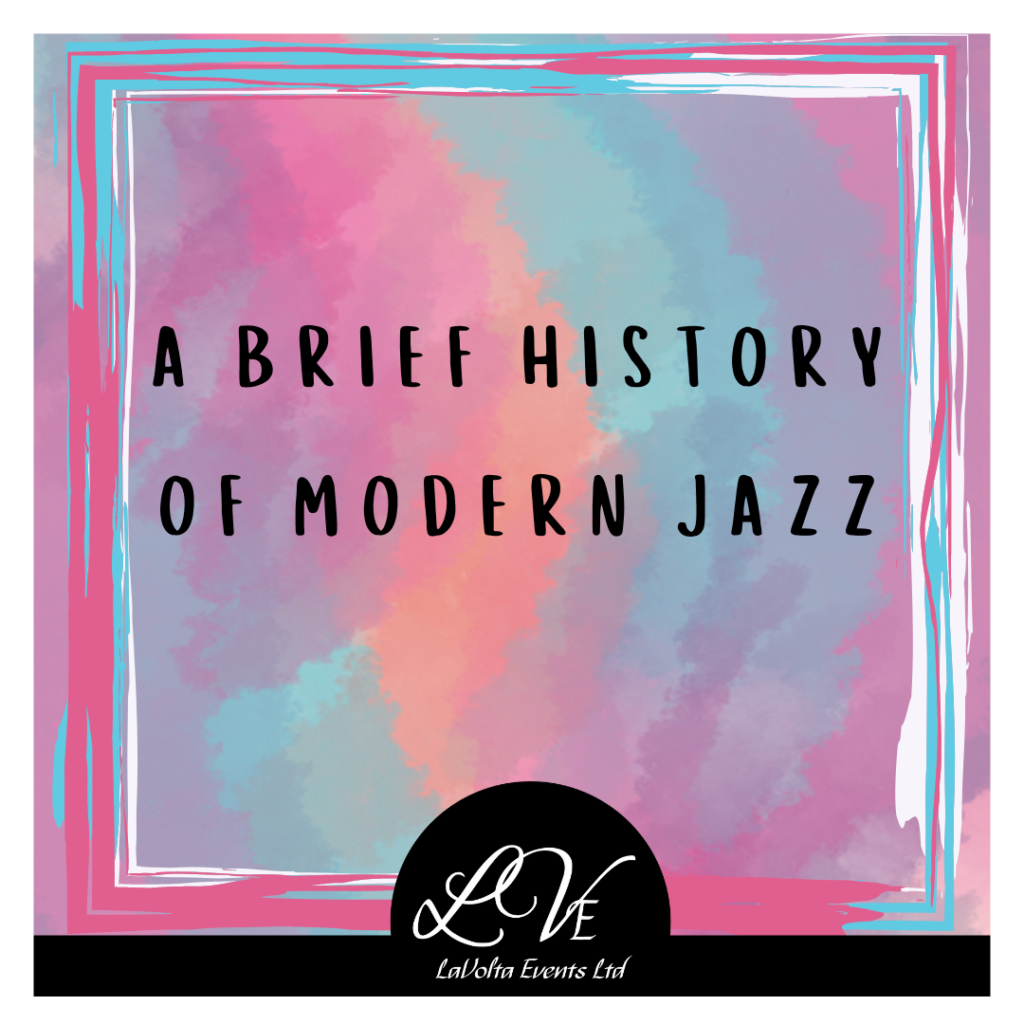A Brief History of Modern Jazz
What exactly is modern jazz dance and how does it differ from other styles of dance and other styles of jazz dance? To answer both elements of that we will need to travel back in time. But first here is the widely accepted definition of modern jazz dance:
‘Modern Jazz dance is a style of dance that combines the styles and techniques of ballet along with those of contemporary dance and the original African infused dance styles that were bought to America in the 17th century.’
Jazz in the 17th century.
The origins of all forms of jazz dance can be traced right back to the 17th century and the African rituals and celebrations dances that made their way into American culture as a result of the thousands of African slaves who were bought over to America. In the 17th and 18th century the styles of traditional African dance became infused with the styles of the sailors who bought the slaves over and the evolution process did not stop there.
In the Us the Slavery Act was passed in 1740 and this prohibited slaves from playing African drums or performing African dances however, this did not diminish the community that had formed and nor it is stop them from expressing themselves. Music was created by the stamping of feet, clapping of hands, and hitting of body parts with their hands, their style of dance continued to evolve and became even more experimental and free-form in it’s style. This change an evolution of the traditional dance styles paved the way for what was to become jazz dance.
New Orleans
New Orleans changed things all over again and fast became the epicentre of jazz development both musically and in dance. New Orleans seemed to live by it’s own set of rules and despite the slavery act it was decreed that every Sunday afternoon slaves could sing and dance in Congo Square. As American, African, Spanish and French culture continued to mix in New Orleans so Jazz became infused with all of the different influences and styles. By the turn of the 20th century New Orleans was a well known entertainment centre and drew in both musicians and dancers from all across the country, and in fact the world.
With such a diverse culture and history the evolution of jazz dance continued, dance was a way for the people to express themselves but it also crossed the divide of ethnicity and religion and bought people together in a way that was not normally accepted.
The 20th Century
The early 1900’s saw jazz dance recognised as a formal style of dance and as it developed and continued to evolve several distinct styles became widely recognised.
In the 1950’s Katherine Dunham, Jack Cole and Bob Fosse had a significant influence over jazz dance, there was a great transition and development, jazz dance moved into mainstream dance schools and entered onto the Broadway stage with musicals such as Chicago and Cabaret, which are still hugely popular today.
Katherine Dunham was an anthropologist and choreographer and she blended Caribbean dance styles and theatrical dance, she established a dance and theatrical school at the height of the Broadway explosion and many famous and world renowned performers went on to start their career there. She had one of the most successful dance careers in the 20th century within African-American and European Theatre and became a sought after teacher. Her dance school ran for almost 30 years and saw thousands of students pass through its doors.
Bob Fosse won eight Tony Awards for his choreography and his input into jazz is hailed as the true beginnings of modern dance. Fosse’s style in clear to see in his work, he bought bowler hats, fishnet stockings and white gloves to jazz dance, he also bought a flair to his burlesque dances and made the style his own.
Jack Cole is viewed as the father of theatrical jazz dance, his signature style is that of huge leaps and deep pliés with fast changes in direction. He took theatrical dance and transformed it by incorporating many of the styles and rhythms from the ethnic dance styles that had made their way into America. Jack Cole was a performer and choreographer and his influence is still prevalent today in Broadway, films, television and music dance videos.
Modern Jazz
Today jazz dance and jazz music often have nothing to do with each there and modern jazz dance is more often perform to pop music. Modern jazz dance has rhythmic and sensuous choreography with unique moves, complex and elaborate footwork and is exciting and energetic to watch. You will often see huge jumps and leaps, fast turns and spins, and deep pliés, alongside the influences of traditional African dance styles. Modern jazz dance is entertaining, expressive and elegant despite what can sometimes be seen as a haphazard dance form, dancers need to have incredible skill and control to be able to master the moves.
If you are looking to improve your jazz dance skills and learn new moves then why not look at our dance associate program and see if it is right for you.

